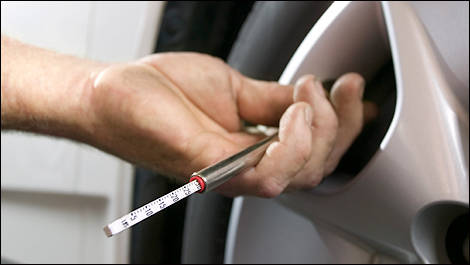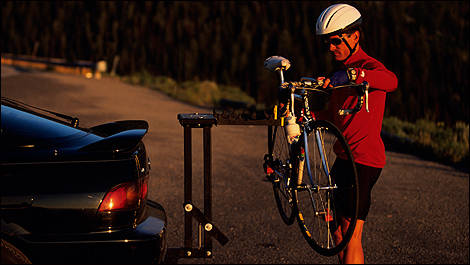Warm-weather family travels are fast approaching-- as are costly admission fees to amusement parks, expensive campsite rentals, and ridiculously overpriced last-minute travel supplies at the gas-stations along the way.
Of course, this year, the price of fuel isn’t likely to be pretty, either. Follow our simple list of ‘Dos’ and ‘Don’ts’ on the road this year to keep more money in your pocket when you stop to fill up the trusty family hauler.
DO keep an eye on your vehicle’s tire pressure. Remember that your ride’s tires lose about one PSI of air every month-- and that a vehicle with under-inflated tires can burn up to 15% more fuel than it needs to. Your tires will last longer if inflation pressure is properly maintained, too.
Don’t over-rely on the Tire Pressure Monitoring System (TPMS), either. Spend the 3 bucks and get a hand-held pressure gauge.
DON’T idle your engine needlessly-- as this gets you no miles per gallon and spits pollution needlessly into the air. If mom needs to run into the coffee shop for some emergency nose-powdering, shut the engine off until she comes back.
DO take your time. Leave for a long trip half an hour early as opposed to speeding on your way. After about 100 km/h, fuel mileage suffers drastically for even a small increase in vehicle speed. This has to do with aerodynamics-- so it’s important to remember that your Grand Cherokee or Pilot is far thirstier driving at 120 km/h than it is at 110 km/h.
DO combine several errands into a single trip. Mileage is best when the engine is warmed up, so you’ll save fuel by hitting the gas station, shopping mall, restaurant and movie theatre on the same trip, where possible.
DON’T insult the efforts of your vehicle’s hard-working aerodynamics engineers by leaving that roof-mounted equipment carrier in place when it’s not needed. Unload your bikes or kayaks, and then remove the rack-- unless your vehicle is being parked for the length of your vacation.
Of course, this year, the price of fuel isn’t likely to be pretty, either. Follow our simple list of ‘Dos’ and ‘Don’ts’ on the road this year to keep more money in your pocket when you stop to fill up the trusty family hauler.
 |
| Photo: Jupiter images |
DO keep an eye on your vehicle’s tire pressure. Remember that your ride’s tires lose about one PSI of air every month-- and that a vehicle with under-inflated tires can burn up to 15% more fuel than it needs to. Your tires will last longer if inflation pressure is properly maintained, too.
Don’t over-rely on the Tire Pressure Monitoring System (TPMS), either. Spend the 3 bucks and get a hand-held pressure gauge.
DON’T idle your engine needlessly-- as this gets you no miles per gallon and spits pollution needlessly into the air. If mom needs to run into the coffee shop for some emergency nose-powdering, shut the engine off until she comes back.
DO take your time. Leave for a long trip half an hour early as opposed to speeding on your way. After about 100 km/h, fuel mileage suffers drastically for even a small increase in vehicle speed. This has to do with aerodynamics-- so it’s important to remember that your Grand Cherokee or Pilot is far thirstier driving at 120 km/h than it is at 110 km/h.
DO combine several errands into a single trip. Mileage is best when the engine is warmed up, so you’ll save fuel by hitting the gas station, shopping mall, restaurant and movie theatre on the same trip, where possible.
DON’T insult the efforts of your vehicle’s hard-working aerodynamics engineers by leaving that roof-mounted equipment carrier in place when it’s not needed. Unload your bikes or kayaks, and then remove the rack-- unless your vehicle is being parked for the length of your vacation.
 |
| Photo: Jupiter image |


